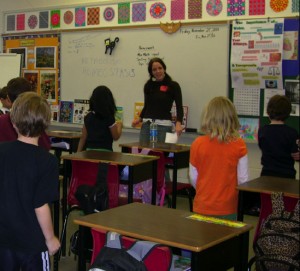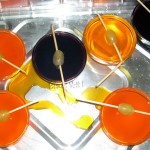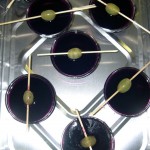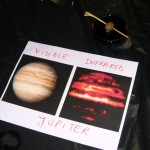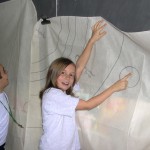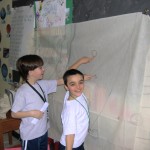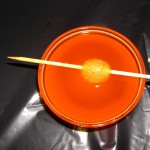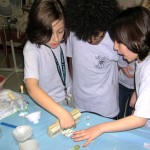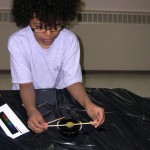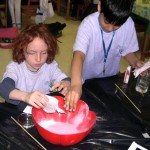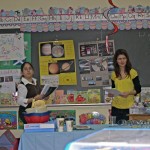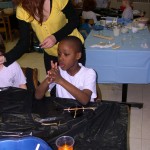Titan and Europa
October 6, 2011 in Space
On Wednesday, April 1st, 2009, the Molecules of Life Project voyaged “where no one has ever gone before” to the moons of Saturn and Jupiter stopping on Titan and Europa. Guided by Université de Montréal Chemistry BSc student Alexandra Cadar and Concordia University Bachelor of Art Education student Catherine Chen, Ms Schuster’s 3rd grade class from École FACE School toured these moons in search of extra-terrestrial life forms, or at least the astrochemistry that suggests that there may be life there someday in the future. Alexandra and Catherine led an interesting discussion on the atmosphere and chemical compositions of the moons and a comparison with those of Earth. The students knew a lot about what is necessary for life on earth. They were fascinated to learn that Europa consists of a smooth white ice outer crust under which lies an expansive and very deep salt water ocean that surrounds a mineral core. They recognized that water and oxygen, which are found on Europa, are essential for life. Titan, they were told may resemble Earth several billion years ago, possessing simple organic molecules such as methane and volcanoes that spew “lava” containing water and ammonia. They were interested to learn that the atmosphere on Titan consists almost entirely of nitrogen which is also the most abundant gas of the atmosphere of Earth (78% nitrogen and 21% oxygen). But, how do scientists know what is on these moons which are hundreds of millions of miles away? ”Spectroscopy” (the study of the interaction between electromagnetic radiation and matter) was described as the tool astrochemists use to study the moons, and the students showed their basic knowledge of radio waves, microwaves for heating, cats that see in the infra-red, the rainbow colors of the visible spectrum and X-rays which they had taken when they broke their bones. With six volunteers, Alexandra showed that some molecules like caffeine which appeared white in visible light, glowed violet under a UV lamp. Catherine then showed how the students could make a model of these moons using a grape for their core, jello of various colors to represent the compositions of the different atmospheres and a glass bowl for the icy outer crust. Sculpting with jello, searching on maps of Saturn and Jupiter for the locations of their different moons and examining the spectrum observed for each moon, the students were very thankful to experience more astrochemistry care of Team Titan and Europa.
For more info and facts on Titan and Europa see: http://www3.signonsandiego.com/stories/2009/mar/16/1c16moons191744-moon-eyed/
What is the composition of jello, a hydrogel of edible proportions see: http://van.physics.illinois.edu/qa/listing.php?id=487



